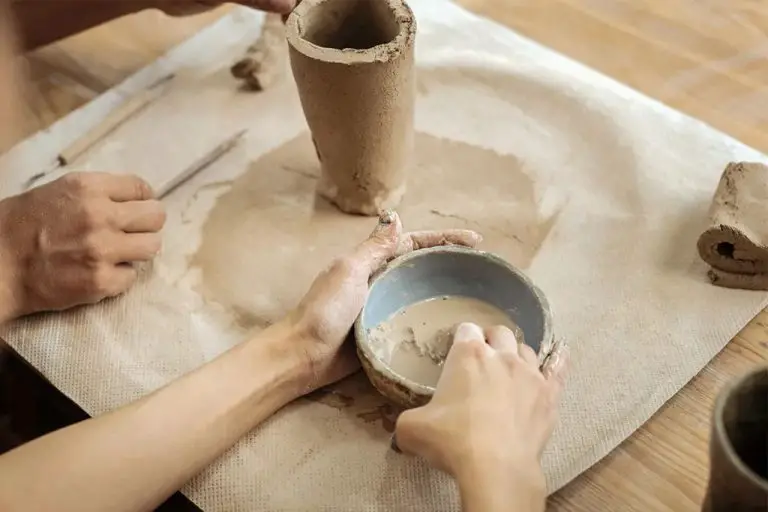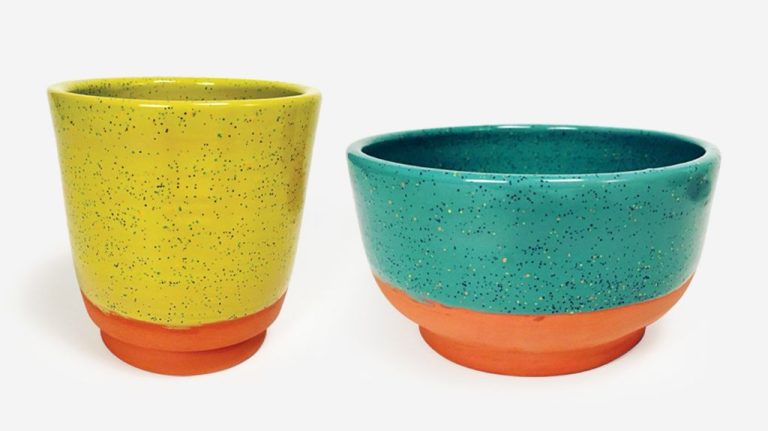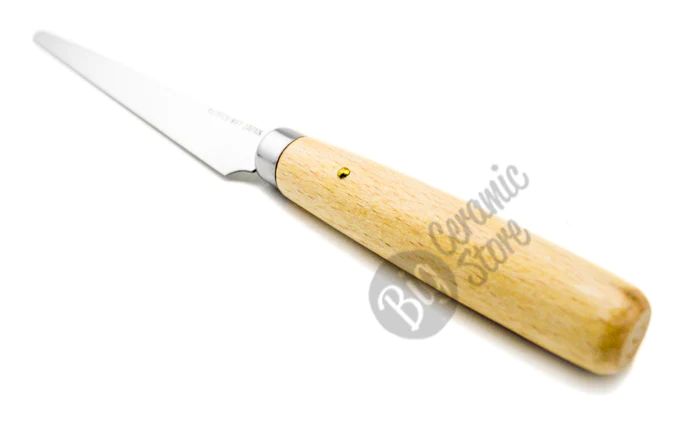What Temperature Do You Melt Glass Bottles?
Recycling glass by melting down old bottles is a common practice that has seen rising interest in recent years. With more people looking for creative ways to repurpose and reuse materials, do-it-yourself (DIY) glass projects using recycled bottles have become increasingly popular.
Melting down glass bottles enables crafters and hobbyists to create new glass items without having to purchase costly materials. It also gives new life to bottles that would otherwise end up in landfills. According to the Glass Packaging Institute, the glass container industry achieves a 33% recycling rate in the United States and Canada, saving 3.5 million tons of glass from landfills every year.[1]
Turning recycled bottles into DIY glass projects provides an accessible way for people to create beautiful works of art and functional pieces while reducing waste. This guide will cover the basics of melting glass bottles, from the ideal temperatures to the step-by-step melting process.
Temperatures Needed to Melt Glass
The temperature range needed to melt glass depends on the composition and thickness of the glass. Most common bottle glass melts between 1,427 and 1,538 degrees Celsius (2,600 and 2,800 degrees Fahrenheit). This range applies to typical soda-lime glass which makes up around 90% of glass bottles and containers.
Factors like the silica content and additives like boron oxide and lead oxide can raise or lower the melting point slightly. Thicker glass also requires more heat to fully liquefy. For example, common window glass melts at the lower end around 1,100°C (2,000°F) due to its specific composition and thin profile.
In general, glass needs to be heated to between 1,400-1,600°C (2,550-2,900°F) to transition from a solid to a molten state. Monitoring the glass temperature carefully is important – too low and the glass won’t melt properly, too high and the glass can boil or burn.
Melting Points of Common Bottle Glass
Most everyday glass bottles are made from soda-lime glass, which is composed of silica sand, soda (sodium carbonate), and lime (calcium oxide). Soda-lime glass has a melting point of approximately 1500°C to 1600°C (2730°F to 2910°F) [1].
Borosilicate glass, which contains boron trioxide, is more heat-resistant than regular soda-lime glass. It has a melting point of around 1650°C (3000°F). [2].
Lead glass, made by adding lead oxide to the glass mixture, has a lower melting temperature of around 1000°C to 1250°C (1830°F to 2280°F). However, lead glass is less common for bottles due to health and environmental concerns over lead content.
In general, most standard glass bottles melt between 1500°C and 1650°C (2730°F and 3000°F). Knowing the exact composition and type of glass is needed to determine the precise melting point.
Using a Furnace
Furnaces designed specifically for melting glass are called pot furnaces. These furnaces allow glass artists to safely reach the high temperatures needed to melt glass (typically between 1400°C – 1600°C). Pot furnaces are available in different sizes from desktop models to large walk-in furnaces.
Fuel options for pot furnaces include gas, electric, and solid fuels like wood or coal. Gas furnaces allow for adjustable temperature control while electric models provide a clean and easy option. Solid fuel furnaces are more hands-on and require feeding the furnace regularly.
Key safety considerations for glass melting furnaces include proper ventilation, fire prevention tools, protective gear, and monitoring of gas lines and electrical connections. Proper training on furnace operation and glass handling is also recommended.
According to Sentrotech, pot furnaces allow glass artists to “achieve certain effects and textures that other melting processes can’t replicate.” With the right furnace, glass workers can safely melt glass for unique art and glassware.
DIY Melting Methods
There are some DIY options for melting glass bottles without an industrial furnace. Here are a few common methods:
Small Crucibles
You can use a small crucible made of refractory material and a torch to melt glass (source). This is one of the most affordable and simple DIY setups. A propane or MAPP gas torch can generate enough heat to melt glass in a small crucible. Crucibles made of materials like clay graphite or castable refractory cement can withstand these temperatures.
Pros: Very low cost, easy to set up. Cons: Limited capacity, slower process, high temperatures can damage crucible over time.
Kilns
Small kilns designed for glass fusing or slumping can also be used (source). While not designed specifically for melting glass, they can reach temperatures of 1000-1700°F. An electric kiln with a pyrometer for measuring temperature works best.
Pros: More controlled temperatures, larger capacity. Cons: Kilns can be expensive, melting takes longer, not designed for continuous melting.
With DIY methods, proper precautions are very important due to the high temperatures. Proper attire, ventilation, and monitoring of the process is required.
Preparing Bottles for Melting
Before you can melt glass bottles, it’s important to properly clean and prepare them. This involves removing any labels, residue, or other contaminants from the bottles.
Start by soaking the bottles in warm water to loosen any paper labels. Use a plastic scraper or steel wool to scrub off the labels. Avoid using solvents, as they can leave residue. Thoroughly rinse off any soap or cleaning agents. Repeat the process until all traces of the label are gone.
Next, wash the bottles well with soap and water. Rinse thoroughly. It’s crucial to remove any sugars, oils, or food particles left inside, as these can burn or discolor the glass when melted. Use bottle brushes reaches the interior surfaces. Let the bottles fully dry.
Optionally, you can sterilize the glass by boiling the bottles in water for 10 minutes. Allow to fully dry again before melting.
For optimal results, it helps to crush the glass bottles into small pieces before melting. This allows the glass to melt faster. Wear safety goggles, thick gloves and use a hammer to carefully smash the glass into chunks no larger than 2 inches (5 cm). Further break down sharp edges or points.
The glass is now ready to be safely added to your melting furnace or kiln. Proper preparation helps prevent contaminants and speeds up melting.
Sources:
https://www.wikihow.com/Melt-Glass-Bottles
Melting Process Step-By-Step
To melt glass bottles properly and safely, follow these steps:
1. Put on safety gear like heat-resistant gloves, safety goggles, and a respirator mask. Melting glass involves extremely high temperatures, so protect yourself.
2. Prepare your melting equipment and workspace. For a kiln, fire it up to between 1400-1600°F. For a furnace, light the burners and preheat it. Cover surfaces with kiln paper or refractory bricks.
3. Place your glass pieces carefully into the kiln or furnace using tongs. Set a timer for 1-2 hours to melt the glass fully. Monitor the temperature.
4. Once fully melted, you may shape the glass by blowing, casting molds, or using glassworking tools. Or simply allow it to cool and solidify.
5. Anneal the glass by slowly cooling it, usually over 8-12 hours. This prevents cracks and breakage.
6. Clean your workspace and equipment once finished. Properly dispose of debris and waste.
With the right safety precautions, melting glass can be done carefully at home. But always research proper methods and monitor the process closely. Melting glass bottles requires very high heat, so exercise caution.
For more details, see this reference: https://www.wikihow.com/Melt-Glass-Bottles
Making New Glass Projects
Once you have successfully melted glass bottles into a molten liquid state, there are many creative ways to reuse the melted glass for new projects and artwork. Here are some of the most popular techniques glass artists use:
Glass Blowing: One of the most common uses for melted glass is glass blowing. This involves blowing and shaping the molten glass into decorative art, vases, bowls, and more using specialized tools and molds. Skilled glass blowers can create intricate sculptures, vessels, and figurines by carefully blowing and manipulating the glass into shape.
Casting: Glass casting involves pouring melted glass into molds in order to create solid glass objects. The glass takes on the shape of the mold as it hardens. Cast glass can be used to create door knobs, jewelry, figurines, plaques, and all sorts of decorative pieces. Using different colored glass can create beautiful swirled or layered effects.
Fusing and Slumping: Glass fusing is the technique of joining different pieces of glass together through melting. The glass pieces may be arranged in a design before fusing. Slumping involves heating glass so it softens and conforms to a mold or shape. These are great techniques for making plates, bowls, jewelry, coasters, and more custom glass items.
The possibilities are nearly endless when it comes to reusing recycled glass for new and creative purposes. With proper safety precautions, melted glass bottles offer an eco-friendly and sustainable art material.
Recycling and Environmental Impact
While making new glass does have some environmental impacts, recycling glass provides key environmental benefits. Recycled glass reduces the need for raw materials like sand, soda ash and limestone to make new glass from scratch (1). This saves energy and reduces mining impacts. According to the Glass Packaging Institute, every ton of recycled glass saves 315 pounds of carbon dioxide from being released into the atmosphere (2).
Industrial glass recycling has lower impacts than home melting projects. Large-scale recycling facilities are optimized for efficiently sorting, cleaning and melting glass. Melting glass at home takes a lot more energy and has more air emissions. While repurposing bottles into new crafts can be a fun hobby, recycling through community programs is better for the environment (3).
(1) https://sarahbassett.co/is-glass-sustainable/
(2) https://www.gpi.org/recycling/glass-recycling-facts
(3) https://earth911.com/home-garden/glass-recycling-diy-vs-curbside/
Conclusion
Melting glass bottles into new projects or simply recycling the raw material requires higher temperatures than many other DIY projects. Glass bottles melt between 1000 to 1700°F depending on the composition. Soda-lime glass, commonly used for bottles, melts around 1500°F. Achieving these high temperatures for melting glass takes special equipment like a large furnace or kiln. With safety precautions, DIY melting methods using a small furnace or foundry at home are possible.
The process involves proper preparation like removing labels, washing bottles, and sometimes crushing or cutting them into smaller sizes. When melted completely, glass can be shaped into new items like beads, bowls, or other projects. With care, melting glass bottles provides a creative way to recycle them versus tossing into the garbage. However, large-scale melting does require significant energy and safety considerations. For most efficient recycling, collection systems to reuse bottles as-is or process them into new glass products are preferable.
In summary, with the right equipment and process, glass bottles can be recycled by melting at home. While requiring high heat and safety precautions, melting glass creatively repurposes bottles versus sending them to the landfill. For recycling glass on a large scale, industrial systems aim to reuse bottles intact or remelt them en masse rather than one-off, small projects.




